On the 22nd of July, 2023, an event of visionary significance took place at ITC Gardenia, bringing together HR leaders from various industries. The event, hosted by eLockr in association with HR Sampark, aimed to facilitate discussions on shaping the future of the working world.
A core theme of Piyush’s presentation was the importance of imagination in shaping the future of Indian society and economy. He emphasized the power of envisioning new possibilities, drawing parallels with groundbreaking technology interventions like Aadhaar and UPI, that have made an impact in the way India works.
One of the critical challenges eLockr aims to address was the lengthy turnaround time in simple tasks like employment record verification, education record verification, etc. He explained how hundreds of organizations have adopted digital credentials technology to revolutionize this process and make it more efficient. Piyush’s message resonated with the audience: “Imagination, combined with technology, has the power to reshape industries and create a meaningful impact”.
Design Thinking: Insights, collaborations, and Ideas
The delegates, consisting of India’s HR leaders, decided to split into three distinct groups, each dedicated to exploring various dimensions of the contemporary work environment, the obstacles it presents, and the forthcoming evolution.
Group 1: How are you preparing the workforce for building a better workplace in the future?
The conversation started with some good old shaayari by Prashant Sharma, VP & Head Of People & Culture at Refyne.
“Kaam karo aisa ki pehchan ban jaaye, har kadam chalo aisa ki nishan ban jaaye, yaha zindagi toh har koyi kaat leta hain, zindagi jeeyo is kadar ke misaal ban jaaye”
This group emphasized the need and importance of employees being aligned with the larger purpose of the organization. They shared that the top management knows the vision and purpose, and maybe it gets perlocated well at 1 level, but beyond that, the sense of purpose may get lost.
The solution this group suggested was to empower the manager layer, who can then communicate the same to each and every employee in the organization. The group believed that this is possible through regular communication, developing managers with purpose and empathy, and inculcating “story-telling” skills in managers.
This group also talked about the importance of the organization becoming a “listening organization”, where the leadership remains connected with the ground reality.
Group 2: What are the gaps you see in building a better workplace in the future?
“Innovation is like oxygen. You can innovate, even while sleeping.”
The group focussed on innovation, and discussed how innovation must happen to create a customer-service-orientation mindset among employees (making the customers win), and drew inspiration from large successful organizations like Apple. They discussed the important role of leader behavior, and how that behavior can sustain culture during difficult times.
The role of the HR leader was highlighted as that of a business multiplier, collaborating closely with other departments to drive growth and innovation. The group posed these three questions that each HR leader or HR manager must ask himself.
- Do I know the organization enough?
- Do I know the business enough?
- Do I know the people enough?
The group also touched upon the rapid pace of technological change, and the significance of adopting sustainable technology practices.
Finally, the group mentioned that in the current times, one of the things that can motivate young employees in India is to bring them closer to business and develop an entrepreneurial mindset in them. A litmus test of this was put forth as follows – “How many of my junior most employees know what EBIDTA is, and what is the EBIDTA of the organization?”
Group 3: What is your vision for building a better workplace in the future?
“Trust, innovation, and research intertwine in this evolving landscape. Trust is now a formidable question mark.”
The third group delved into identifying gaps and opportunities across the three dimensions of people, technology, and organization. The group recognized the importance of work-life balance, the impact of mental health, and the evolution of roles in the context of advancing technology. Diversity, equity, and inclusion were also key themes, along with discussions on the challenges and benefits of the hybrid work model. Leadership’s role in building trust and aligning with organizational culture was underscored.
Key takeaways from the event:
The event yielded a multitude of insights and ideas that collectively shape the future of the working world.
Customer-Centric Approach: The success of companies like Apple underscored the importance of being customer-oriented. Understanding customer behavior and needs drives innovation and organizational success.
HR as Business Multiplier: HR’s role is evolving from a departmental function to that of a business multiplier. Collaboration with various departments and understanding business pains are becoming crucial.
Technology and Data Transparency: Leveraging technology and ensuring transparency in data were recognized as pivotal for success in the modern business landscape.
Work-Life Balance and Mental Health: The importance of work-life balance was discussed, with a focus on the mental well-being of employees. Awareness about mental health is becoming increasingly significant.
Diversity and Hybrid Work: Organizations need to address diversity, equity, and inclusion. The hybrid work model, with its challenges and benefits, was also a topic of great interest.
Leadership and Culture: Leadership behavior, attitude, and trust-building were highlighted as essential components of fostering a productive and innovative organizational culture.
Tree of Priorities for 2024
As the event was being concluded, the delegates wrote down three HR priorities for the year 2024! A point of thought coming from HR leaders across various industries, companies, and landscapes with the common objective of “building a better working world”.

| Vision and culture alignment | From policies to production | Skilling |
| Transparency between teams and organization | Employer brand for the future | Technology |
| HR needs to start focusing on unlocking productivity for the organization | Build relationships | Being human in all aspects of practices |
| Creating purpose for people | Connect people to purpose | HR Digitalization |
| HR – Technology | Maximum employee potentials | HR as a business multiplier |
| HR – based on science | Personalized workspace benefits | HR to deal with the culture of change |
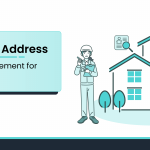
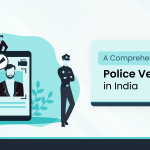
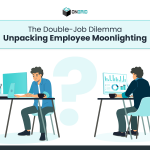
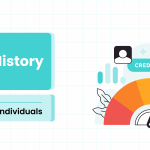
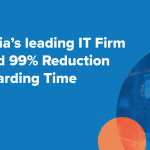
Leave a Reply